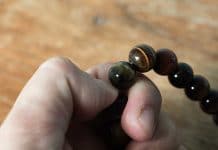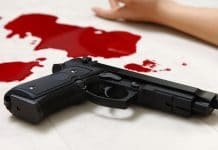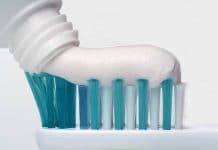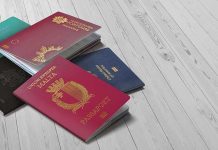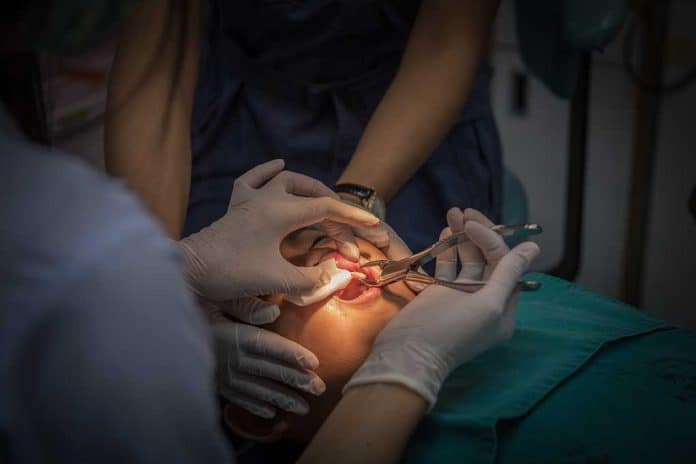
(TacticalNews.com) – A rotten tooth is no laughing matter, even with modern medicine and medical professionals. Can you picture how bad it would be if SHTF and those professionals are far and few between? Imagine removing a bad tooth, likely on our own, after SHTF.
First You Need the Proper Tools
The first thought to come to mind may be a pair of pliers and some whiskey. While whiskey would certainly help, you’re going to want more than a pair of rusty pliers; if you break the tooth in half or fragment it, problems are going to be much more severe. You’ll need both extraction forceps and a periosteal, both of which professionals use. Tweezers or something similar are important for removing any smaller pieces that remain after the initial extraction.
Dental mirrors are also ideal to have, especially for teeth in weird spots. Of course, going back to the whiskey, you’ll want some sort of painkiller, analgesic or anesthetic; if using an injectable anesthetic, be sure to know what you’re doing before using it. The next item on your list is to stop the bleeding, because there’s going to be a lot of it both during and after the operation. Gauze and cotton balls work best.
Just because it’s post SHTF doesn’t mean you shouldn’t be sanitary. In fact, it should encourage you to be extra sanitary to avoid preventable infections. Have disposable gloves such as latex, nitrile or vinyl; medical grade would be best, but anything is better than nothing. Congratulations, you’re now ready to perform your very own tooth extraction.
A reclining seat is optional and could be helpful if you’re removing another person’s rotten tooth, but it’s not necessary to remove your own.
Preparing for Surgery
The first thing you need to do before you even think about taking a tooth out is sterilize your tools. Thankfully, there are several ways to do this:
- Soak the tools in alcohol.
- Soak the tools in barbicide.
- Boil the tools in water. Be sure to allow them to cool before using them.
- Use an open flame. Again, allow tools to cool and be careful not to make the tools brittle.
- Bleach.
Now you’re ready to start the operation. Get yourself or your patient in a comfortable position; we promise the task is going to be painful enough, so comfort is a must. Next, be sure to wash your hands, clear up to your elbows, and put on some sort of face covering to cover your mouth and nose.
The next step of the operation is to administer a painkiller of some sort. Skip this for now if working on yourself. It’s vital that you don’t impair your coordination or motor skills while performing this procedure.
Extracting the Tooth
With the periosteal, start to dig out the tooth at and below the gum line. Ever remove a tire from a rim? Well, the process is similar, and you need to work your way around the tooth. Now, there’s going to be blood, and plenty of it even at this point, so be sure to keep some gauze or cotton balls handy. You can also place some in the cheek to be ready to soak up any excess.
Take the forceps and grab as low on the tooth as you can. Next, firmly grasp the tooth, taking care not to fragment or crush it if you’re able. Depending on the angle, you may be able to rock the tooth back and forth in the socket, helping it to release and easing the extraction. Be sure to use great caution and the minimum amount of force needed to avoid damaging other parts of the mouth.
Post Extraction
After successfully extracting the tooth, you need to examine it and make sure no pieces are left behind. If there are, use your tweezers and get the pieces out to avoid future infection. The site where the tooth once was is going to be bleeding badly at this point; place gauze or cotton balls over the area and have the patient, or yourself, gently bite down on the gauze.
All Done
Congratulations! You’ve just extracted your first tooth. It may only be the first of many to come if you don’t follow proper mouth hygiene after SHTF. Dental hygiene is one of the most overlooked aspects to survival, and the consequences are a force to be reckoned with.
Be sure to keep a regimen of painkillers and antibiotics handy until the hole in your mouth heals properly. If you can’t find commercialized antibiotics, there are natural ways to fight infection as well.
Please keep in mind that this is not medical advice, and the procedure described should only be used if there are no other options available. In the case of any medical emergency, you should seek the help of a trained professional whenever possible.
What did you think of this article? Reply to our email and let us know! We would love to hear from you!
Copyright 2021, TacticalNews.com



